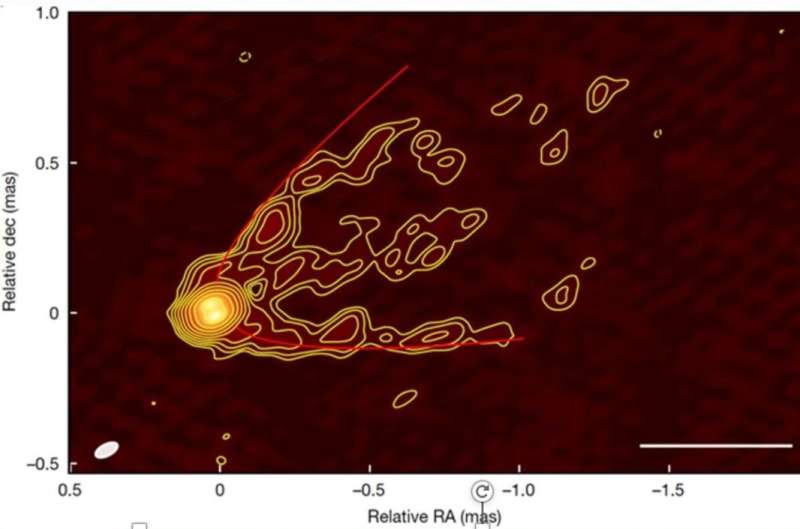This article has been reviewed according to Science X's editorial process and policies. Editors have highlighted the following attributes while ensuring the content's credibility:
fact-checked
peer-reviewed publication
trusted source
proofread
New theoretical model offers unified explanation for astrophysical outflows

A recent study published in The Astrophysical Journal has introduced a new theoretical model that explains astrophysical outflow phenomena spanning 12 orders of magnitude, from protostars to supermassive black holes.
Led by Prof. Willem Baan from the Xinjiang Astronomical Observatory of the Chinese Academy of Sciences (CAS) and Prof. An Tao from the Shanghai Astronomical Observatory of CAS, the study explores a novel integration of supersonic deLaval nozzle theory with ambient pressure gradients.
The model offers a unified framework for understanding the collimation and acceleration of outflows throughout the universe, providing a coherent explanation for phenomena that span 12 orders of magnitude in energy and scale.
According to the researchers, despite the vast differences in energy and scale—ranging from slow gas outflows in planetary nebulae to relativistic jets in active galactic nuclei—outflow morphologies are predominantly shaped by ambient pressure gradients.
Through a comprehensive analysis of multiple classes of celestial objects, they thoroughly validated the model's universality. In planetary nebula Hb 12, the model accurately reproduces its characteristic hourglass-shaped outflow structure. For protostar HOPS370, the theory successfully explains the formation mechanism of its bipolar outflow.
Notably, in FR I radio galaxies 3C 84 and M87, the model accurately describes the evolution of relativistic jets by incorporating gravitational effects from supermassive black holes. These results strongly confirm the broad applicability of the theoretical framework.
"This research reveals a universal physical mechanism in astrophysical outflows, offering a new perspective on matter transport from stellar to galactic scales," said Prof. Baan.
"This unified framework not only resolves long-standing theoretical challenges in astrophysics, but also guides future observational research," said Prof. An.
Moreover, the model shows promising applications across various research areas, including Be-type stars, accreting neutron star systems, and starburst-driven galactic outflows, demonstrating the universal importance of ambient pressure gradients in shaping astrophysical flows.
More information: Willem A. Baan et al, Shaping Outflows and Jets by Ambient Pressure: A Unified Framework, The Astrophysical Journal (2025). DOI: 10.3847/1538-4357/ada9ea
Journal information: Astrophysical Journal
Provided by Chinese Academy of Sciences





















